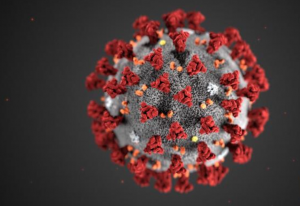The Florida Department of Health (DOH) reports an increase in COVID-19 cases in the Tampa Bay area, some attributed to spread among household contacts, individuals going to congregate settings (i.e. weddings, places of worship, parties, etc.) and people who are traveling.

DOH is urging members of the public to follow guidance from the Centers for Disease Control and Prevention (CDC) to prevent the spread of COVID-19 in your household during quarantine or isolation.
Quarantine is used to keep someone who might have been exposed to COVID-19 away from others. It helps prevent spread of disease that can occur before a person knows they are sick or if they are infected with the virus without feeling symptoms
People who have been in close contact with someone who has COVID-19 need to quarantine. In addition, if someone has been tested but unaware of exposure, they should remain in quarantine until they receive a negative result. People in quarantine, including those who feel sick and/or are waiting for test results, should stay home, separate themselves from others, monitor their health, and follow directions from their state or local health department.
Close contact means:
- You were within 6 feet of someone who has COVID-19 for a total of 15 minutes or more
- You provided care at home to someone who is sick with COVID-19
- You had direct physical contact with the person (hugged or kissed them)
- You shared eating or drinking utensils
- They sneezed, coughed, or somehow got respiratory droplets on you
During quarantine:
- Stay home for 14 days after your last contact with a person who has COVID-19
- Watch for fever (100.4◦F), cough, shortness of breath, or other symptoms of COVID-19
- If possible, stay away from others, especially people who are at higher risk for getting very sick from COVID-19
Isolation is used to separate people infected with COVID-19 from people who are not infected. People who are in isolation should stay home until it’s safe for them to be around others.
In the home, if you are sick or infected:
- Monitor symptoms
- Stay in a separate room from other household members, if possible
- Use a separate bathroom, if possible
- Avoid contact with other members of the household and pets
- Don’t share personal household items, like cups, towels, and utensils
- Wear a mask when around other people, if you are able to
If you live in the same household with someone who has COVID-19:
- Try to stay at least 6 feet away from the sick person.
- If you have to share space, make sure the room has good air flow.
- Open the window to increase air circulation.
- Improving ventilation helps remove respiratory droplets from the air.
- Avoid having unnecessary visitors.
If you are caring for someone with COVID-19 at home or in a non-healthcare setting:
- The person who is sick should eat (or be fed) in their room, if possible.
- Wash dishes and utensils using gloves and hot water: handle any dishes, cups/glasses, or silverware used by the person who is sick with gloves. Wash them with soap and hot water or in a dishwasher.
- Clean hands after taking off gloves or handling used items
- Do not share dishes, cups/glasses, silverware, towels, bedding, or electronics (like a cell phone) with the person who is sick.
- The person who is sick should wear a mask when they are around other people (Masks should not be placed on young children under age 2, anyone who has trouble breathing, or is not able to remove the covering without help.)
- The caregiver should put on a mask and ask the sick person to put on a mask before entering the room.
- Wear gloves when you touch or have contact with the sick person’s blood, stool, or body fluids, such as saliva, mucus, vomit, and urine. Throw out gloves into a lined trash can and wash your hands right away.
- Practice everyday preventive actions to keep from getting sick: wash your hands often; avoid touching your eyes, nose, and mouth; and frequently clean and disinfect surfaces.
- Clean and disinfect “high-touch” surfaces and items every day: This includes tables, doorknobs, light switches, handles, desks, toilets, faucets, sinks, and electronics.
DOH encourages individuals to discuss any questions or concerns with their primary care provider.




